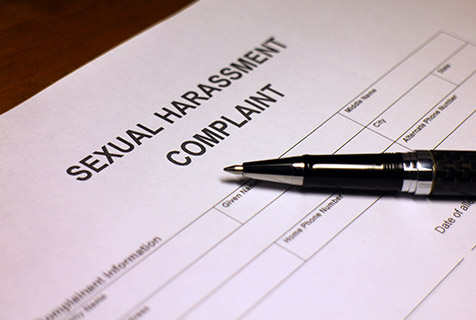Addressing sexual harassment at the workplace
Addressing sexual harassment at the workplace
Most academic studies dealing with the subject of sexual harassment in the workplace are based on data from non-Muslim majority countries, while some studies look at Muslim-majority countries as well. In contrast, very little research has been conducted on it with regard to Pakistan. Faiza Ali’s and Robin Kramar’s article in the Asia Pacific Journal of Management attempts to break new ground in this area.
According to the authors the socio-cultural factors in a country and the norms and values that employees bring to the workplace, to a great extent, determine what constitutes sexual harassment in a given context. These values, norms, and cultural characteristics that are brought into the workplace by employees—combined with institutional procedures and managerial predispositions about what is appropriate and what is not—define the boundaries of acceptable behavior in the workplace.
As a result, what does not constitute harassment for employees in another society or country might constitute harassment in Pakistan because of the different socio-cultural values and ideas of modesty in this society.
Out of the six private sector organizations in Lahore that were studied for the purposes of this research—all of them were sensitive about sexual harassment—only one had explicit provisions to deal with the issue. Many employees who were tasked with enforcing rules to prevent sexual harassment in the workplace lacked proper training to deal with complaints. Also, while most organizations had some general policies against sexual harassment, step-by-step concrete guidelines on how to properly handle a registered complaint and see it through to the end were found missing.
Simply introducing and implementing laws against sexual harassment will not work in Pakistan unless organizations take a series of steps to address cultural issues that, when left unaddressed, become an impediment to a proper handling of sexual harassment cases.
The first step is to ensure gender sensitivity training for employees and those in-charge. Mere familiarity with relevant legislation is not enough. The socio-cultural values and norms in the society need to be upheld as the metric against which sexual harassment complaints are assessed. No law can encompass all definitions and predict all situations. Ultimately the organizations need to interpret sexual harassment laws in light of the prevalent norms of decency and acceptable behavior.
Also required are counseling services for employees—especially, and most importantly, all women employees—to let them know of the exact procedures that need to be followed in order to file a sexual harassment complaint against someone (it would be preferable to have counselors and trainers of the same gender as that of the group of employees they are addressing). Once a complaint has been filed, the complainant must be assured of complete and unconditional protection against victimization. This will enable employees to raise sexual harassment complaints without fear of losing their jobs or putting their promotions and careers at risk.
Reference
Ali, Faiza, & Kramar, Robin (2015). An exploratory study of sexual harassment in Pakistani organizations. Asia Pacific Journal of Management, 32, 229–249.
http://link.springer.com/article/10.1007/s10490-014-9380-1
About the Author
Faiza Ali is Assistant Professor at the Suleman Dawood School of Business, LUMS. She teaches principles of management and organizational behavior. She is Co-Program Director for the executive program on Advanced Leadership. Her research interests include diversity management, gender equality at the workplace, international HRM and leadership. Her research has been featured in the Asia Pacific Journal of Management, the International Journal of Human Resource Management and Gender, Work & Management.

